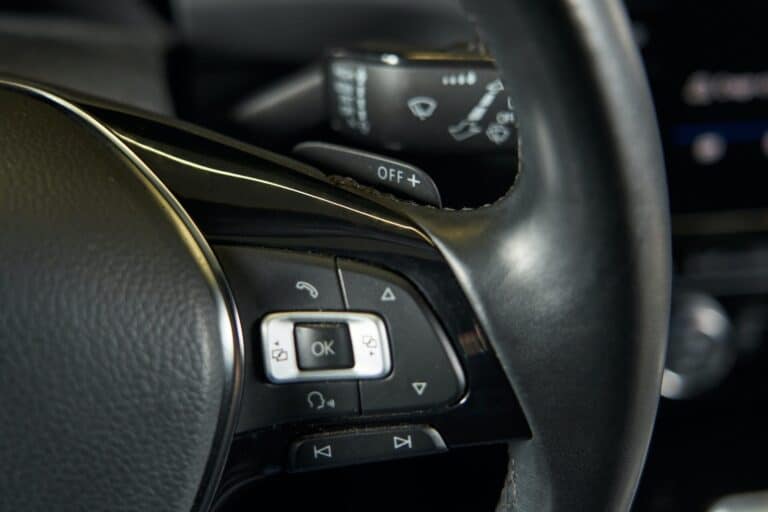Ram 1500 4-inch Lift 33s (Things You Must Know)
Utilizing heavy-duty trucks to carry out everyday tasks can be exciting. However, some modifications you carry out would require different accessories to operate smoothly.
For example, a common truck modification is lifting. Nevertheless, a lift is not an isolated modification since you must modify other components to suit the lifted truck.
This article discusses a 4-inch lift for your Ram truck and what tire size would fit afterward.
The Ram 1500 can be lifted 4 inches off the ground to increase ground clearance and improve its off-road capability. The perfect tire size for this lift is the 35s tire after a lift. The 33s tire is well suited for an inch size of less than 4.
Lifting 4-inch on 33-inch tires?
You can use the 33-inch tire on your Ram 1500 after lifting by 4-inches. This arrangement comes with some advantages and some disadvantages too.
Let’s consider these to help you make an informed decision.
Pros of 33s On a 4-inch Lift
The 33s tires may not be the best fit for a 4-inch lifted Ram truck, but if you insist on them, especially if they are the only available option, there are some benefits you get to enjoy.
These include;
#1. Better Fuel Economy
You get to save more fuel when a 33-inch mounts your 4-inch lift Ram 1500. That happens because the weight of the 33s tire is lesser compared to the 35 or the 37s tires.
This weight places fewer demands on the engine and keeps the fuel consumption at a minimum.
#2. Better Use of Space
The 33-inch tires are quite small and hence do not project outwardly to occupy so much space. It lets you squeeze into those small spaces to park your car conveniently.
#3. Better Acceleration
Acceleration is connected to the weight of the tire. It affords you more speed when you have a 33-inch tire on your Ram 1500 truck.
The engine can pull a lesser weight on the ground.
Cons of 33s On a 4-inch Lift
The disadvantages connected to the use of the 33s tire in a 4-inch lift include:
#1. Lower Clearance
The 33-inch tire does not provide a better clearance than the 4inch lift Ram 1500. As a result of this, there is improper shock absorption.
#2. Lesser Articulation
The 33s tire does not keep up with an intact speed at rough terrain. So you get to discover that some tires move faster than others when on rough grounds.
#3. Improper Lift Inch
Overall, the 33s is not the best fit for your Ram 1500 when on a 4-inch lift. This mismatch poses a lot of disadvantages to the smoothness of your driving.
What Size of Tires Can I Put On a 4-inch Lift?
A more suitable tire for the Ram 1500 4-inch lift is the 35s tire. The 35s tire is well suited for the Ram 1500 with a lift of 3.5 inches and above.
Among others, the clearance is an important advantage afforded by the 35-inch size tire.
The clearance of the 35-inch tire is the minimum distance from the tire to the vehicle’s chassis. A 4-inch lift leaves much space between the tire and the tire well.
The need to fill up this space is provided by a large tire which is a 35-inch tire.
Although you can fix other tire sizes like the 33-inch tire onto the Ram 1500 with a 4-inch lift, the most suitable tire size is the 35s tire.
Almost any tire size could fit into a 4-inch lift of the Ram 1500.
However, you would experience slight changes in how your car runs because most of these tires do not fit perfectly into your car.
What is the Difference Between 33s and 35s?
When it comes to the sizes of tires, every inch count. A lot of your driving and maintenance experience depends on the size of the tire you have wrapped around your rim.
The physical difference between the 33s tire and the 35s tire is that the 35s tire is two inches wider than the 33s tire.
Other differences not overt between the 33s and the 35s tires include:
#1. Clearance
The clearance of a tire is the minimum distance from the tire to the object it measures.
In this case, the clearance of these tires is the distance between the tires and the tire well. For example, the 35-inch tire has an inch clearance above the 33-inch tire.
Although this varies depending on the axle and suspension kit used, the clearance of a tire allows the wheels more vertical room to travel and absorb more shocks.
Another importance of the clearance of a tire is that the vehicle that runs on tires with higher clearance affords it the ability to drive on roads with rough terrain more comfortably.
#2. Weight
The weight of the 33-inch tire is not the same as that of the 35-inch tire. The 33-inch tire weighs about 55 pounds, and the 35-inch weighs about 65 pounds.
The weight of these tires poses a significant difference in driving dynamics.
Aside from the increasing weight that the vehicle must overcome before it runs, there is an increased demand for the engine to deliver torque.
Aside from the pressure on the engine, the heavier the tires, the greater the resistance you need to overcome before the tires can effectively roll over for a smooth ride.
#3. Minimum Suspension Lift
The minimum suspension lift you can apply to both tires is different. In addition, due to the sizes of these tires, the minimum suspension that you can apply to these tires also differs.
For example, the 33-inch tire requires a minimum suspension of 2-inch height. On the other hand, a minimum suspension of up to 4-inch is required for the 35-inch tire.
#4. Torque Difference
This difference may not be direct. The torque of a vehicle is not directly dependent on the tires.
Instead, acceleration is the single most important factor that affects the torque. Nonetheless, the size of the tire greatly affects the acceleration.
The smaller the tire, the greater the acceleration and thus the greater the torque.
The 33-inch tire would accelerate faster than the 35-inch tire. This increased acceleration is due to the distance from the center of the tire to the exterior along the rotational axis.
This distance significantly reduces in the direction of the rotational axis.
#5. CV Joints
The CV Joint is a constant velocity joint that acts as a mechanical joint. This joint allows a drive shaft to transmit power through a variable angle.
The variable angle maintains a constant rotational speed without overt friction increases. You’ll find them mainly in front-wheel drives.
The 33-inch tires maintain a longer CV joint angle than the 35-inch tire. This difference in the length of the joint is strictly due to the tire’s weight.
Moreover, the heavier the tire, the more pressure on the joint, which predisposes the joint to breakage.
#6. Articulation
The articulation of a vehicle is the ability of the vehicle to keep all four wheels intact on rough terrain. This ability provides better stability and greater traction.
The articulation of a wheel is the vertical wheel travel telling us how far a wheel can move up and down compared to the base frame of that car.
Larger tires offer better articulation than smaller tires. The smaller the tires, the less traction they pull on rough surfaces and hence may not be optimized for such terrain.
#7. Fuel Economy
The fuel consumption of the car is significantly dependent on the tire size. A 35-inch tire would consume more fuel than a 33-inc tire.
Fuel consumption is directly proportional to the weight of the tire. The tire’s weight requires more horsepower to pull; this requirement, in turn, consumes more fuel.
#8. Price
The price of the 33-inch tire differs significantly from that of the 35-inch tire. The cost of the 33-inch tire is around 250 dollars, and the 3- inch tire costs around 350 dollars.
Conclusion
The 33-inch tire can be used for the 4inch lift Ram 1500. This arrangement has both advantages and disadvantages.
Though the 33inch tire fits into the Ram 1500, the 35-inch tire is the best-fit tire.
The difference between the 33s tire and the 35s tire includes the size in inches, the weight, the torque, and the CV angle joint.






